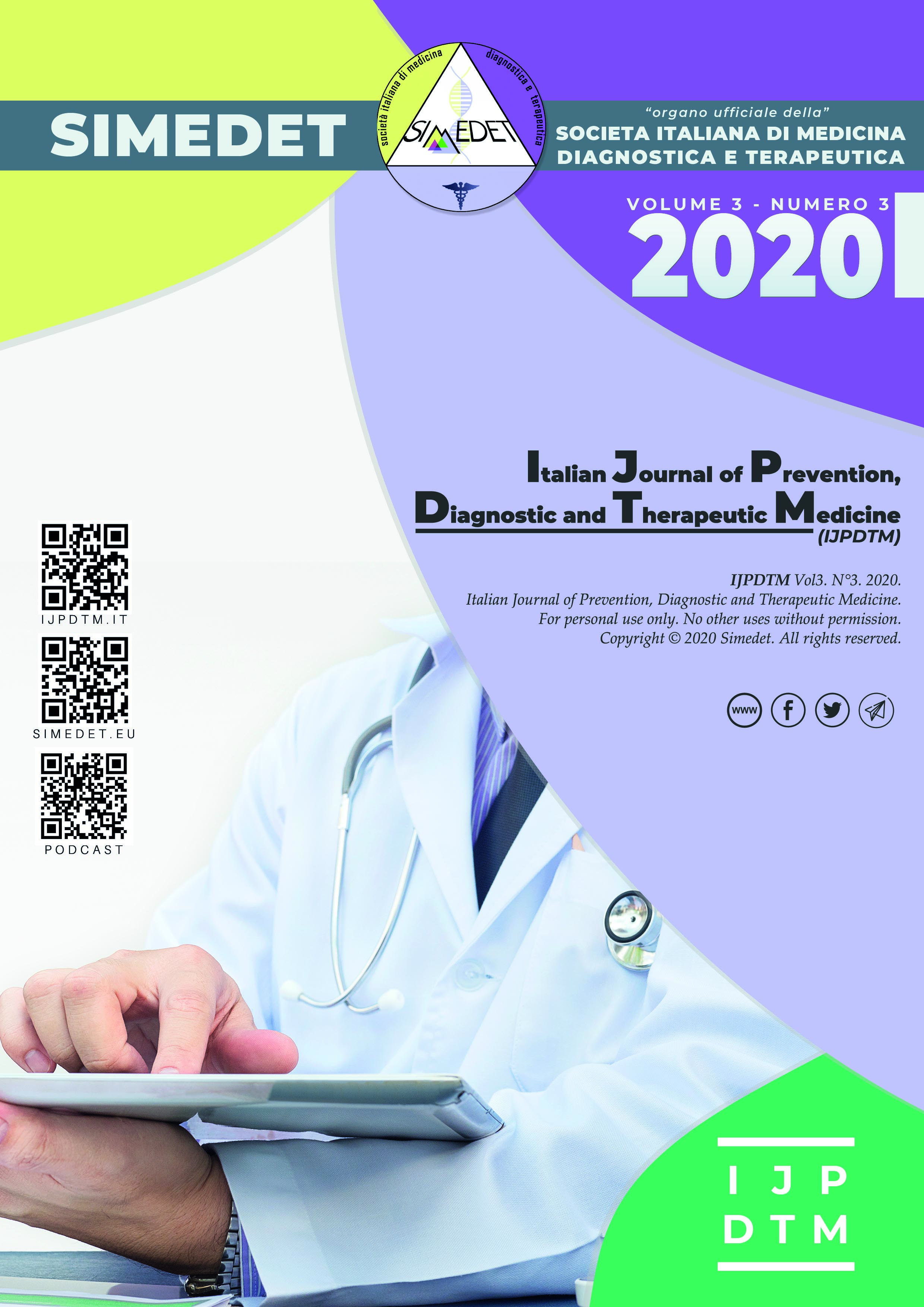Embolia polmonare ed algoritmi diagnostici
Contenuto principale dell'articolo
Abstract
In questa review affronteremo alcuni aspetti relativi al processo diagnostico in relazione ai quadri clinici di embolia polmonare considerando i differenti score di rischio, citando gli studi più noti e recenti, gli strumenti clinico-pratici attualmente disponibili e gli algoritmi diagnostici a nostra disposizione.
Downloads
Dettagli dell'articolo

Questo lavoro è fornito con la licenza Creative Commons Attribuzione - Non commerciale - Non opere derivate 4.0 Internazionale.
Riferimenti bibliografici
Klok FA, Mos IC, Nijkeuter M, et al. Simplification of the revised Geneva score for assessing clinical probability of pulmonary embolism. Arch Intern
Med 2008;168(19):2131-36.
Wells PS, Anderson DR, Rodger M, et al. Derivation of a simple clinical model to categorize patients probability of pulmonary embolism: increasing the models utility with the SimpliRED D-dimer. Thromb Haemost 2000;83(3):416-20.
van Belle A, Büller HR, Huisman MV, et al; Christopher Study Investigators. Effectiveness of managing suspected pulmonary embolism using an algorithm combining clinical probability, D-dimer testing, and computed tomography. JAMA 2006;295(2):172-9.
Righini M, Van Es J, Den Exter PL, et al. Age-adjusted D-dimer cutoff levels to rule out pulmonary embolism: the ADJUST-PE study. JAMA 2014;311(11):1117-24.
van der Hulle T, Cheung WY, Kooij S, et al; YEARS study group. Simplified diagnostic management of suspected pulmonary embolism (the YEARS study): a prospective, multicentre, cohort study. Lancet 2017;390(10091):289-97.
van der Pol LM, Tromeur C, Bistervels IM, et al; Artemis Study Investigators. Pregnancy-adapted YEARS algorithm for diagnosis of suspected pulmonary embolism. N Engl J Med 2019;380(12):1139-49.
van der Pol LM, Bistervels IM, van Mens TE, et al. Lower prevalence of subsegmental pulmonary embolism after application of the YEARS diagnostic algorithm. Br J Haematol 2018;183(4):629-35.
Kearon C, de Wit K, Parpia S, et al; PEGeD Study Investigators. Diagnosis of pulmonary embolism with d-dimer adjusted to clinical probability. N Engl J Med 2019;381(22):2125-34.
Wells PS, Anderson DR, Bormanis J, et al. Value of assessment of pretest probability of deep-vein thrombosis in clinical management. Lancet 1997;350(9094):1795-98.
Bernardi E, Camporese G, Büller HR; Erasmus Study Group. Serial 2-point ultrasonography plus D-dimer vs whole-leg color-coded Doppler ultrasonography for diagnosing suspected symptomatic deep vein thrombosis: a randomized controlled trial. JAMA 2008;300(14):1653-59.
Ageno W, Camporese G, Riva N; PALLADIO Study Investigators. Analysis of an algorithm incorporating limited and whole-leg assessment of the deep venous system in symptomatic outpatients with suspected deep-vein thrombosis (PALLADIO): a prospective, multicentre, cohort study. Lancet Haematol 2015;2(11):e474-80.
Konstantinides SV, Meyer G, Becattini C, et al; ESC Scientific Document Group. 2019 ESC Guidelines for the diagnosis and management of acute pulmonary embolism developed in collaboration with the European Respiratory Society (ERS). Eur Heart J 2019 Aug 31. pii: ehz405. doi: 10.1093/eurheartj/ehz405 [Epub ahead of print].

